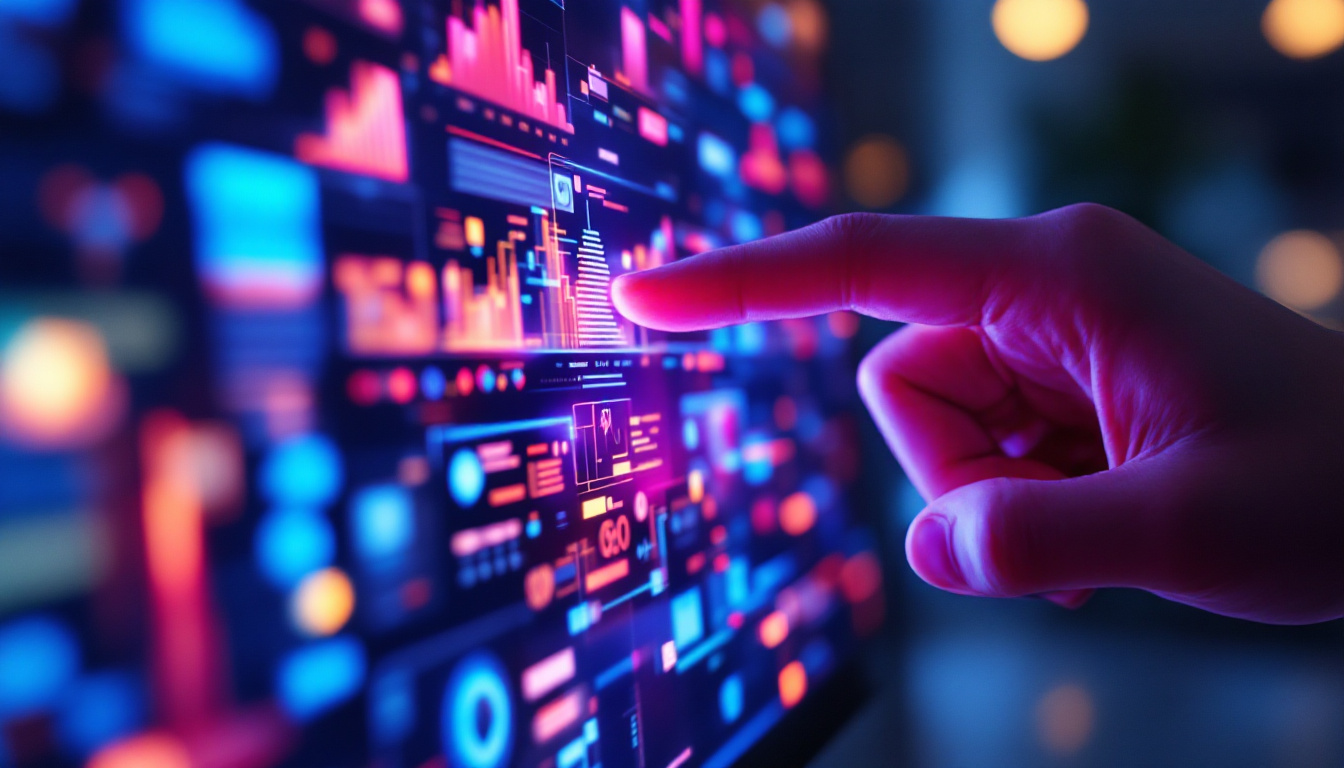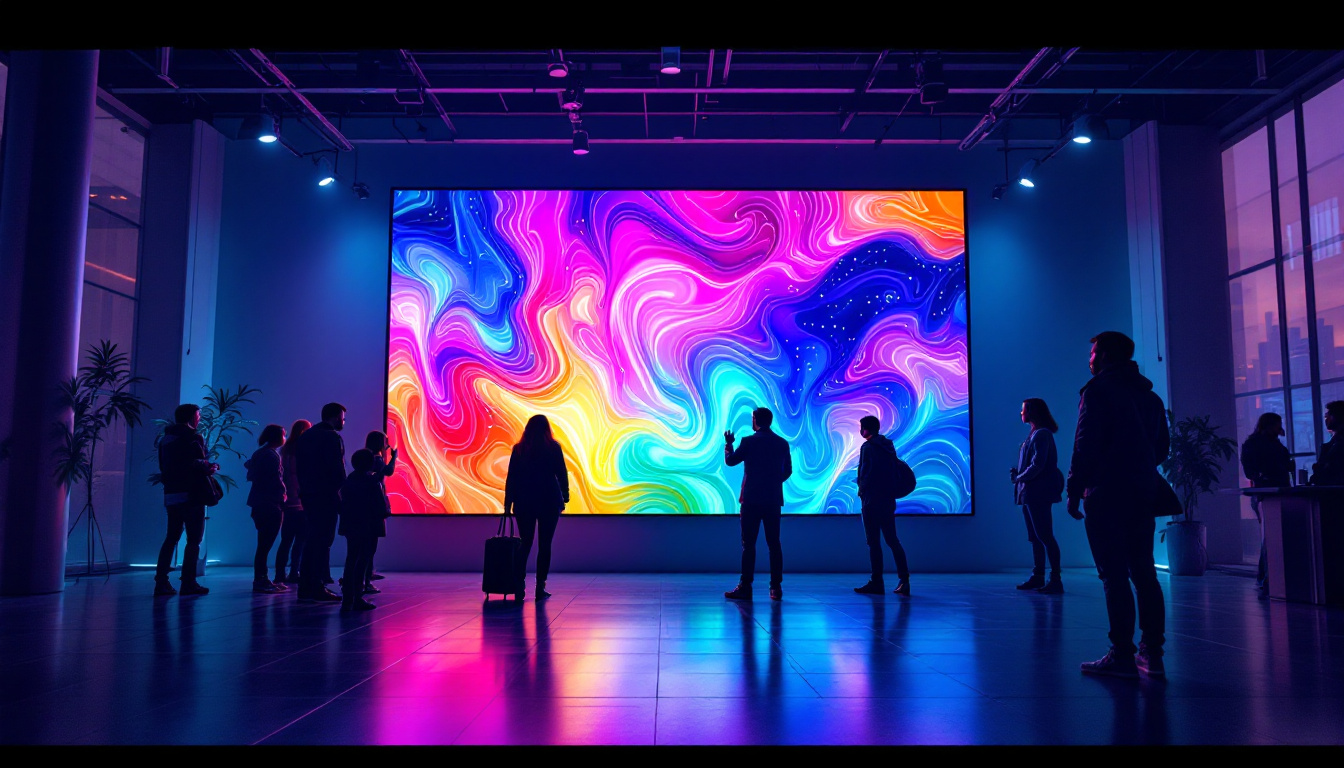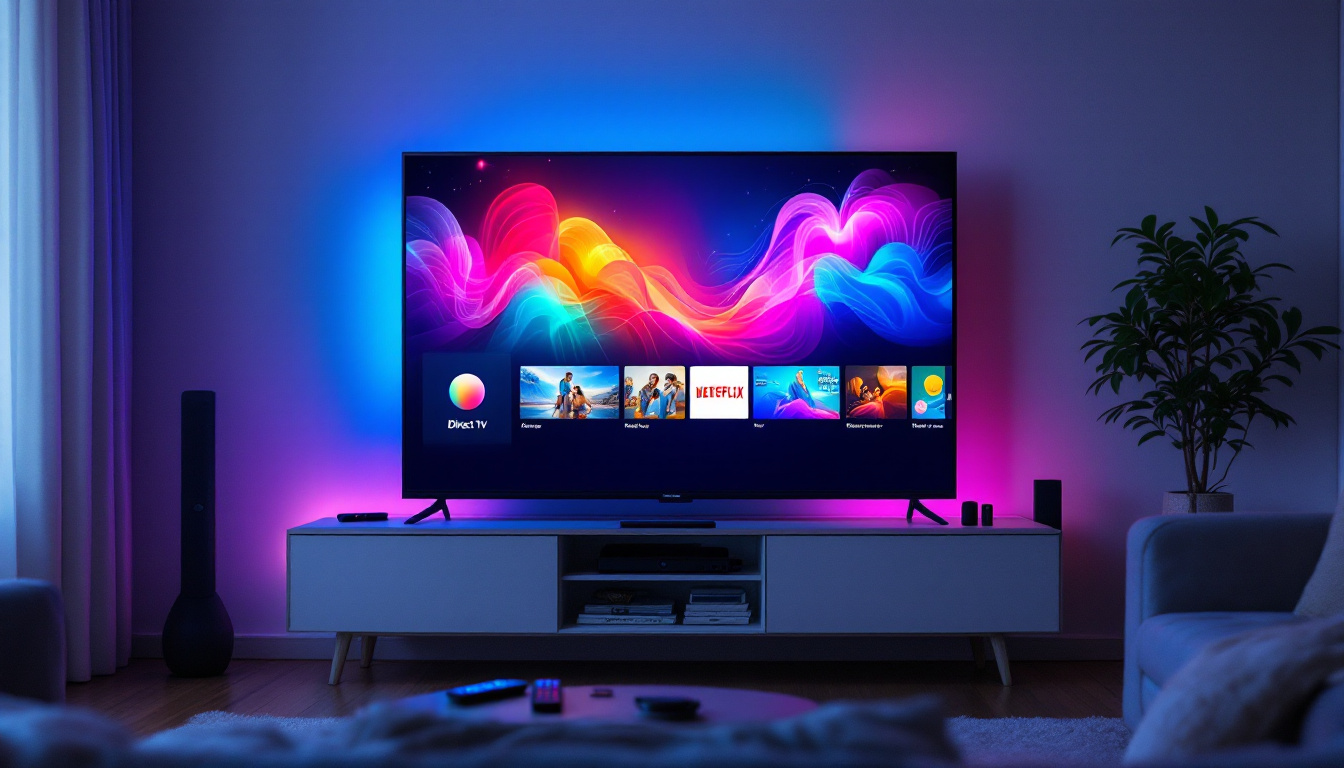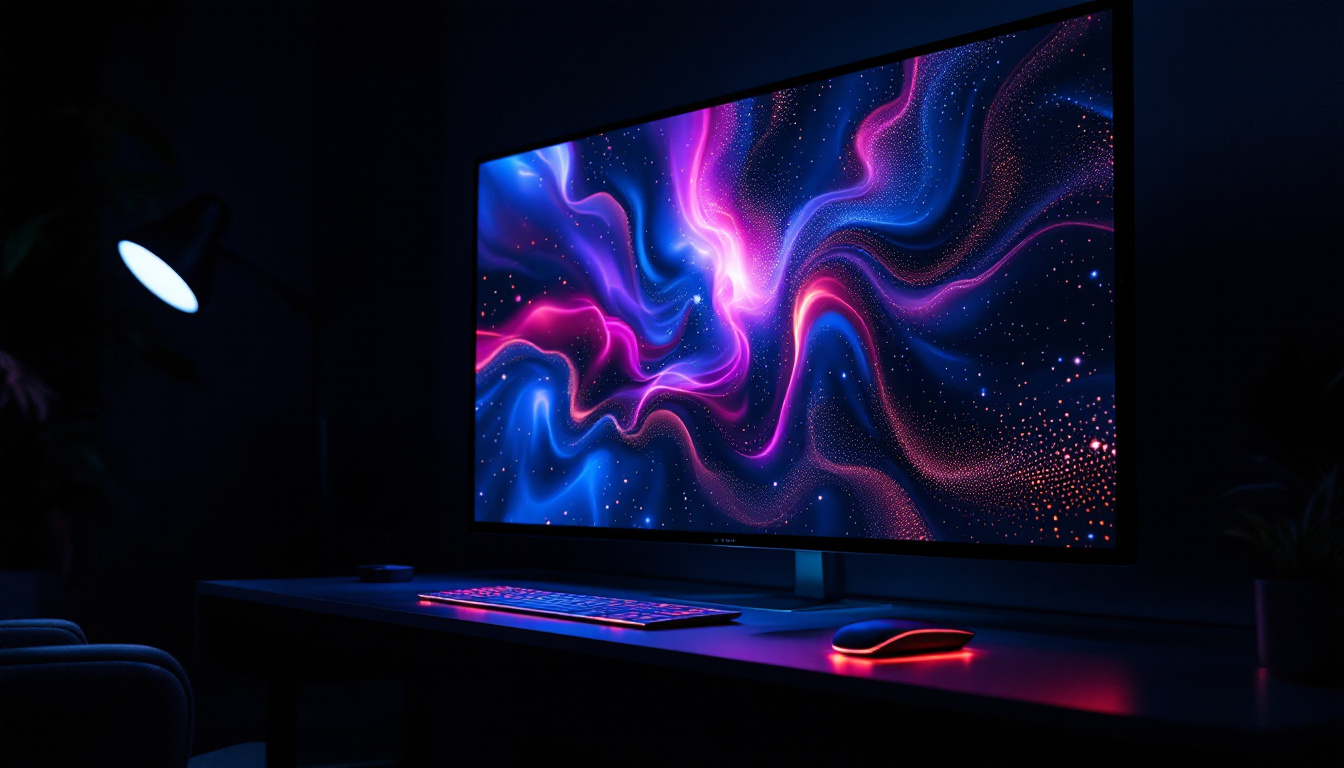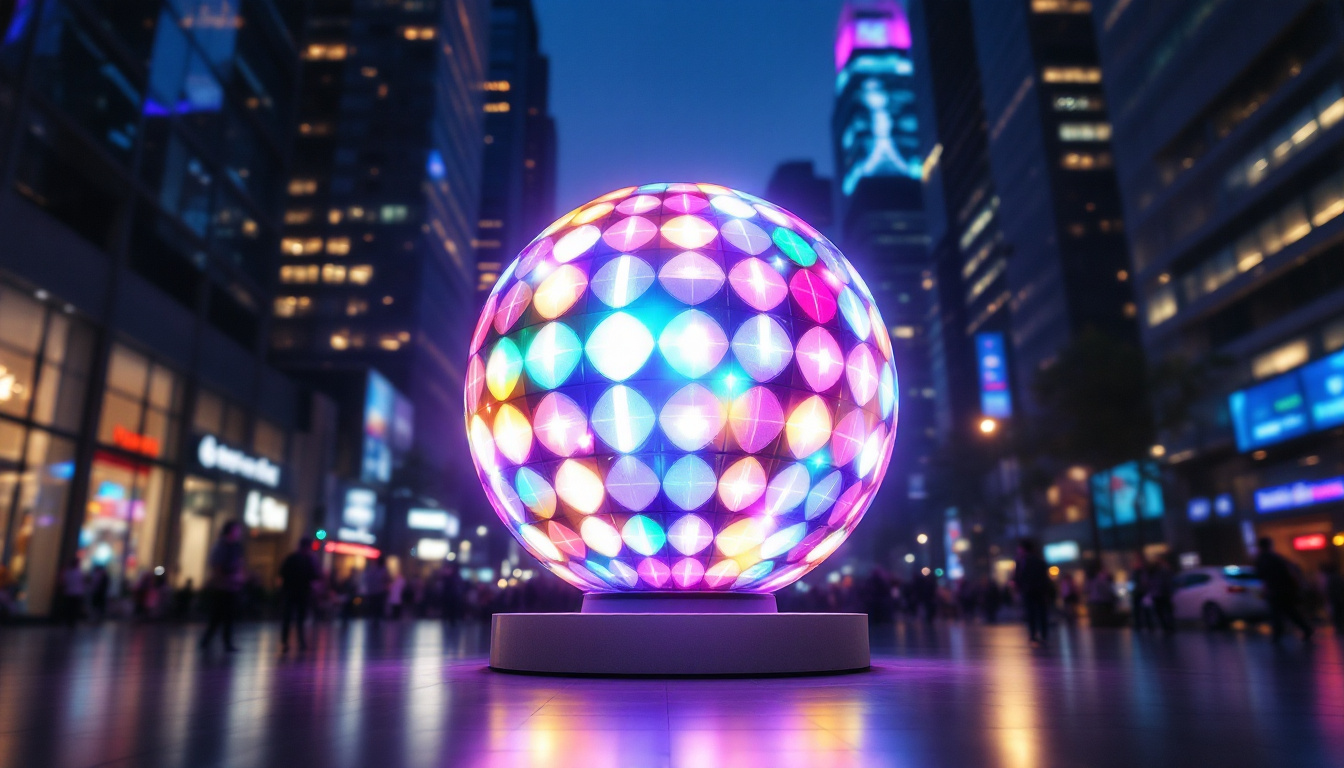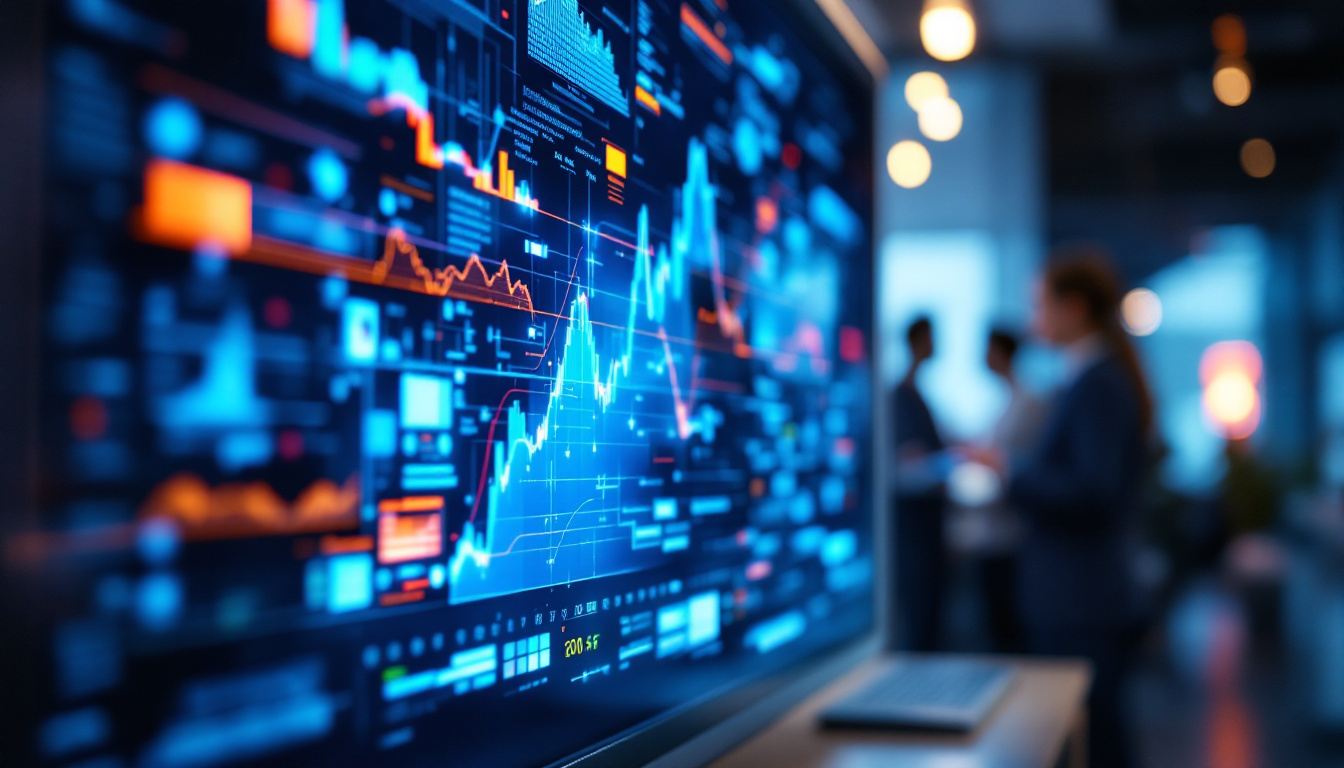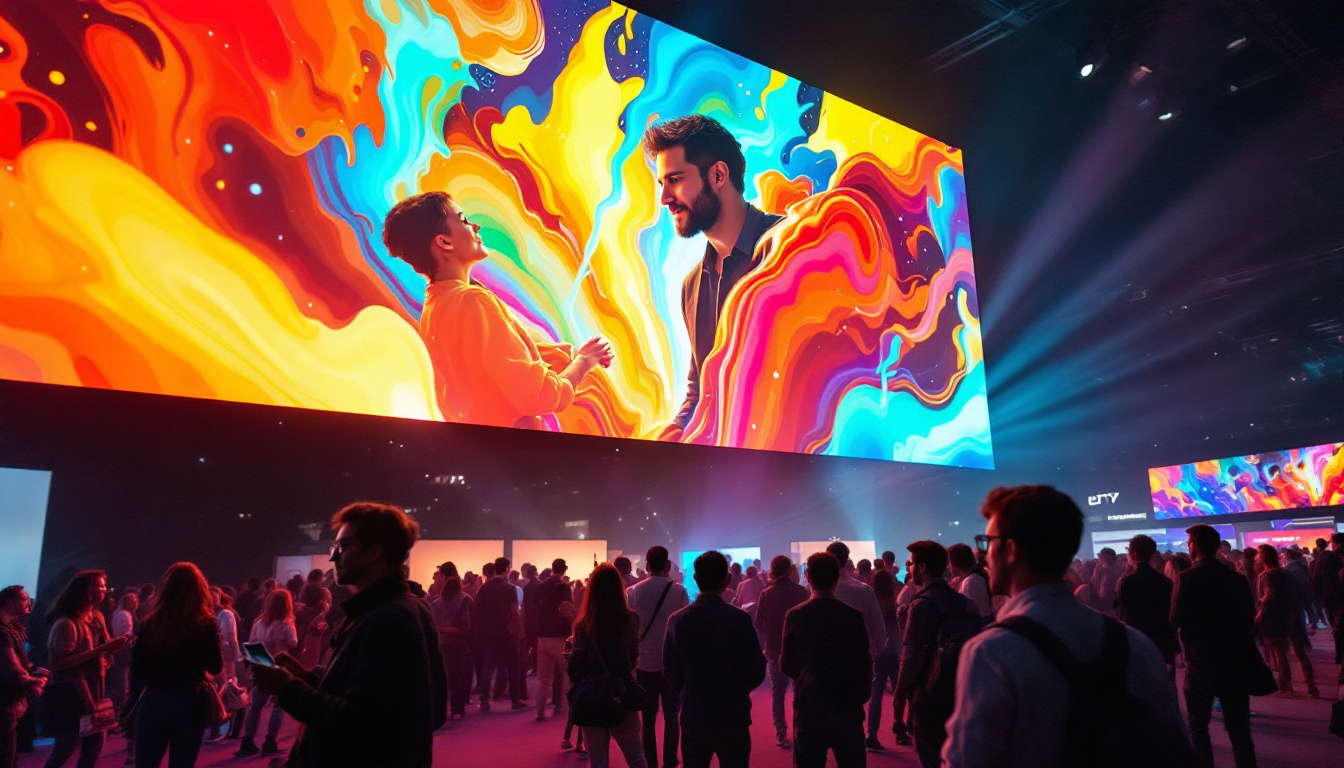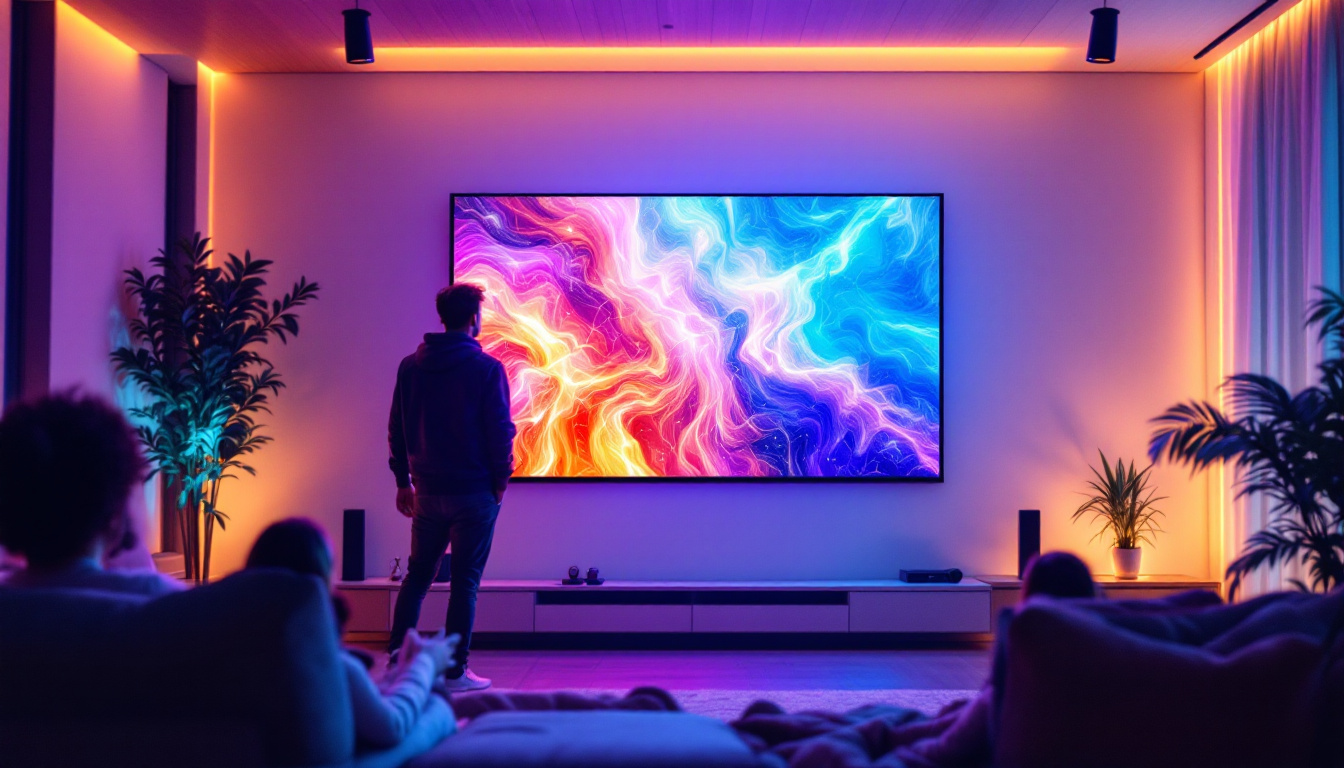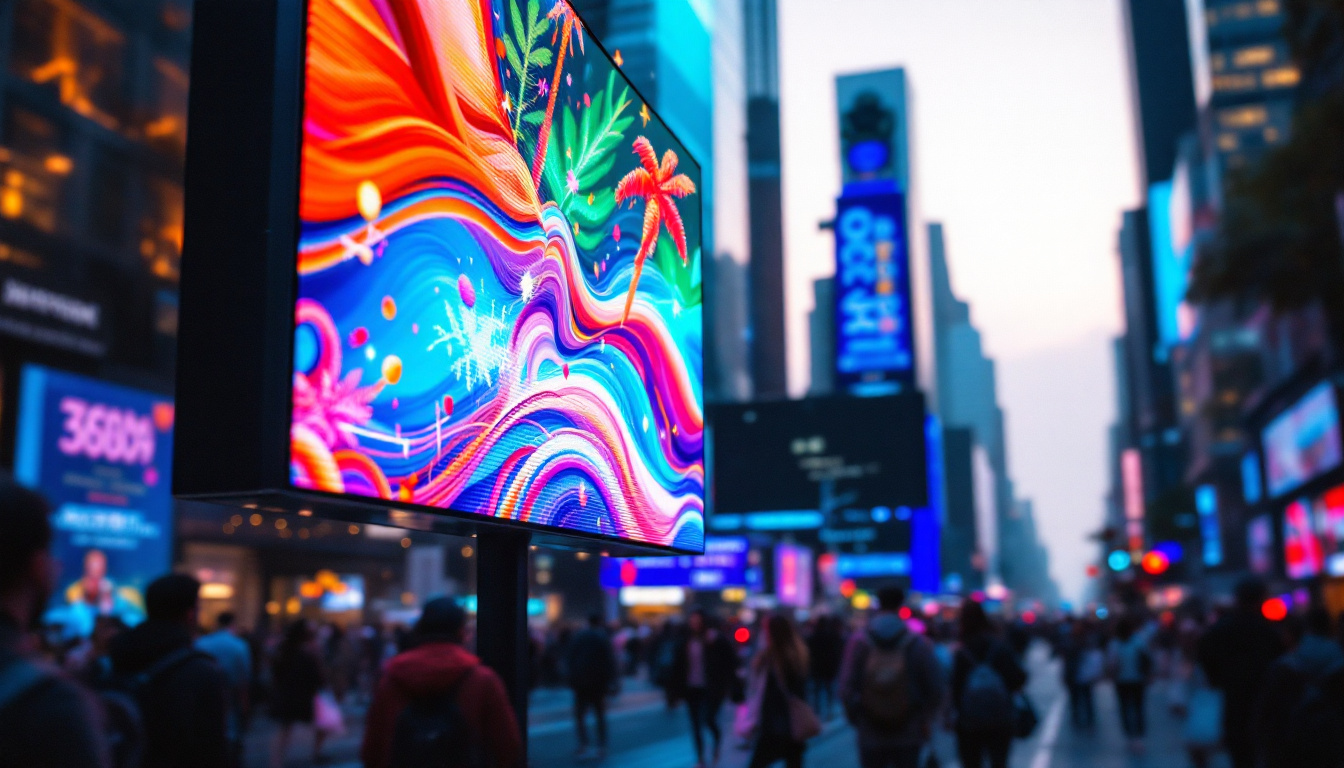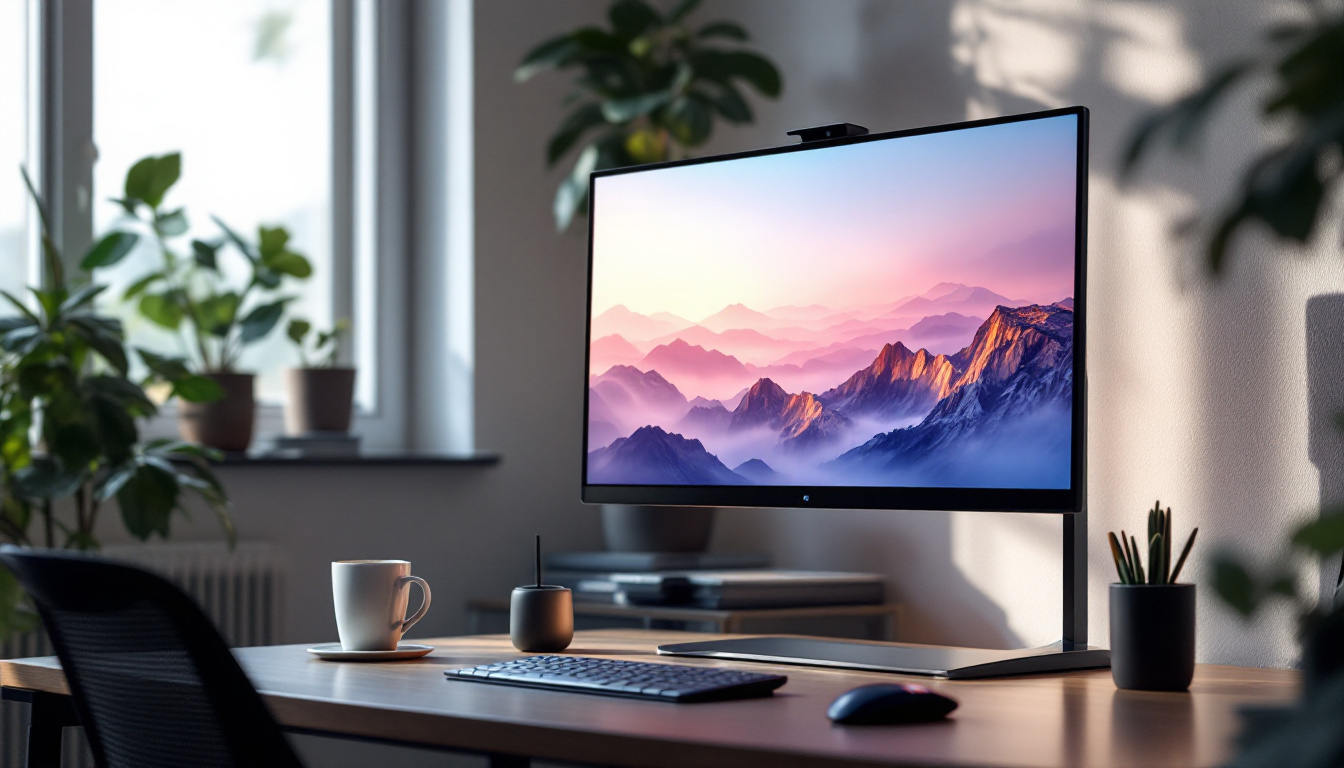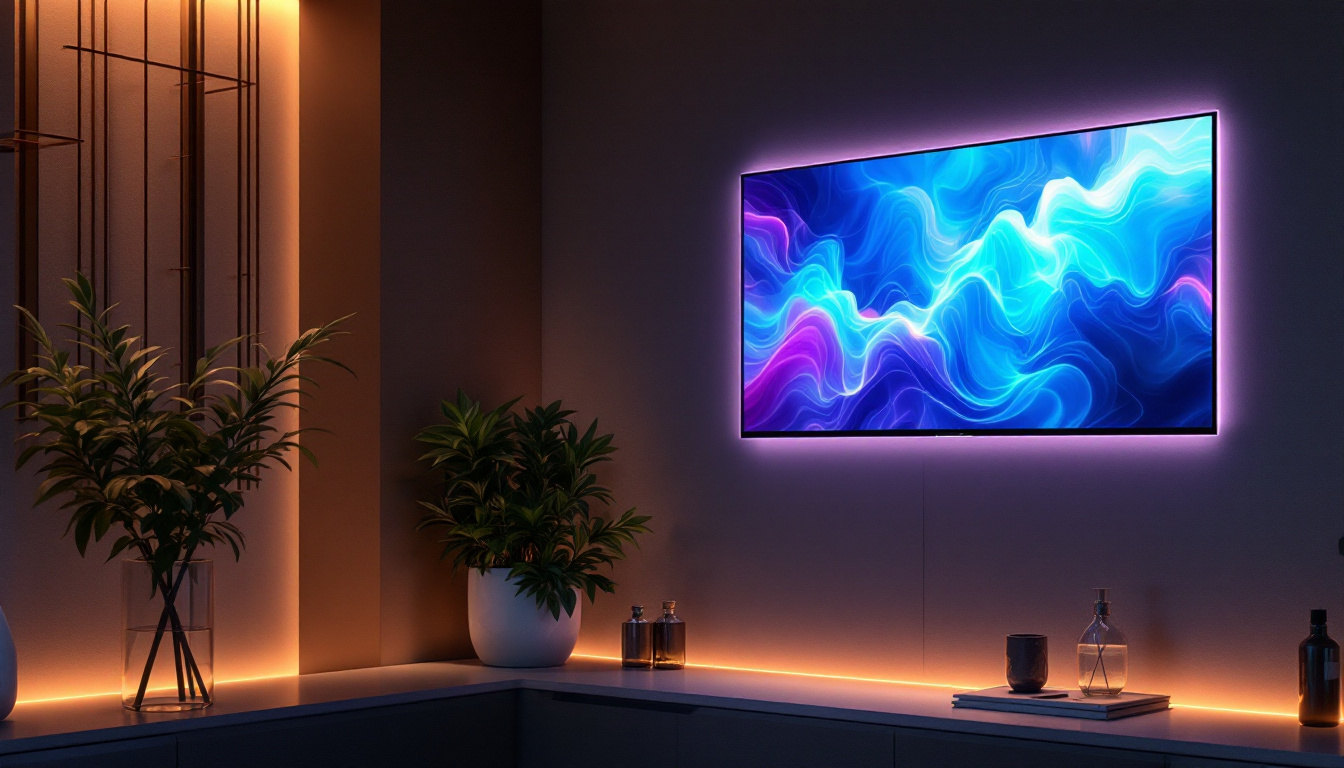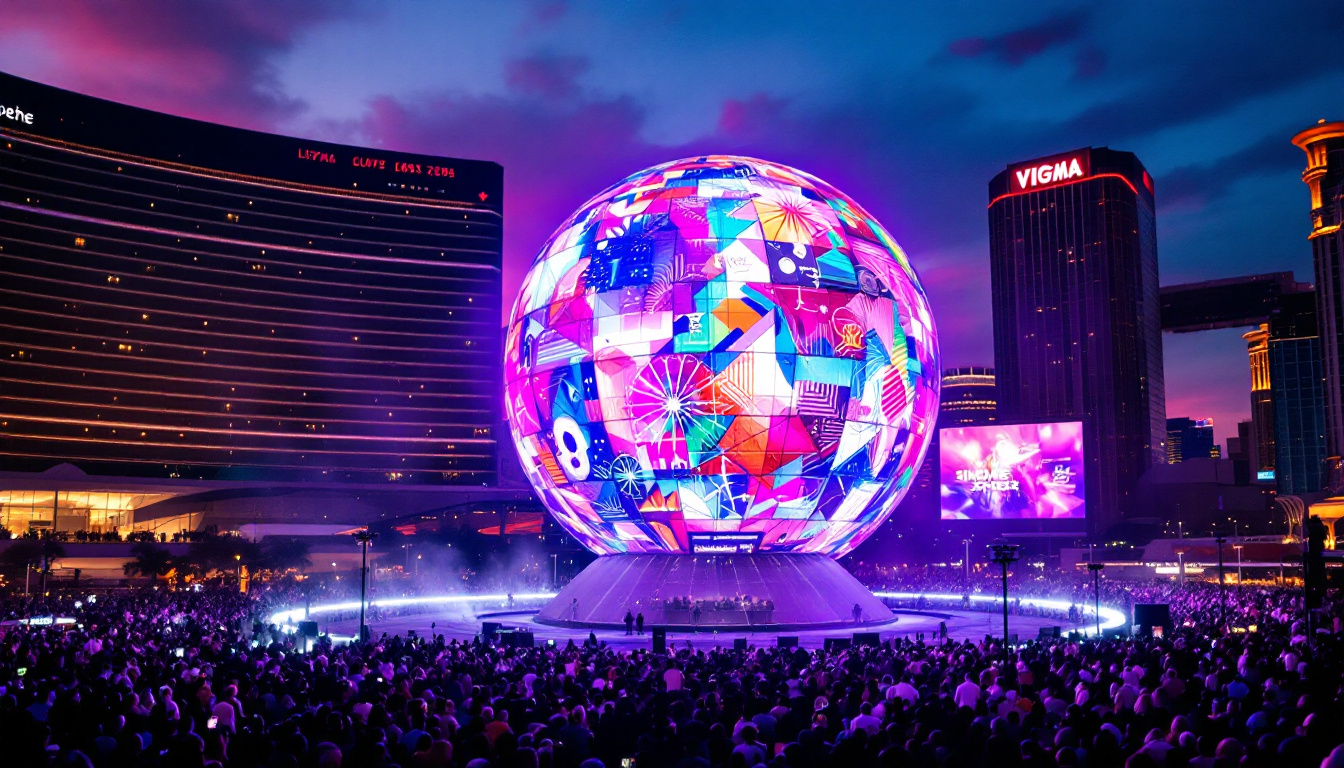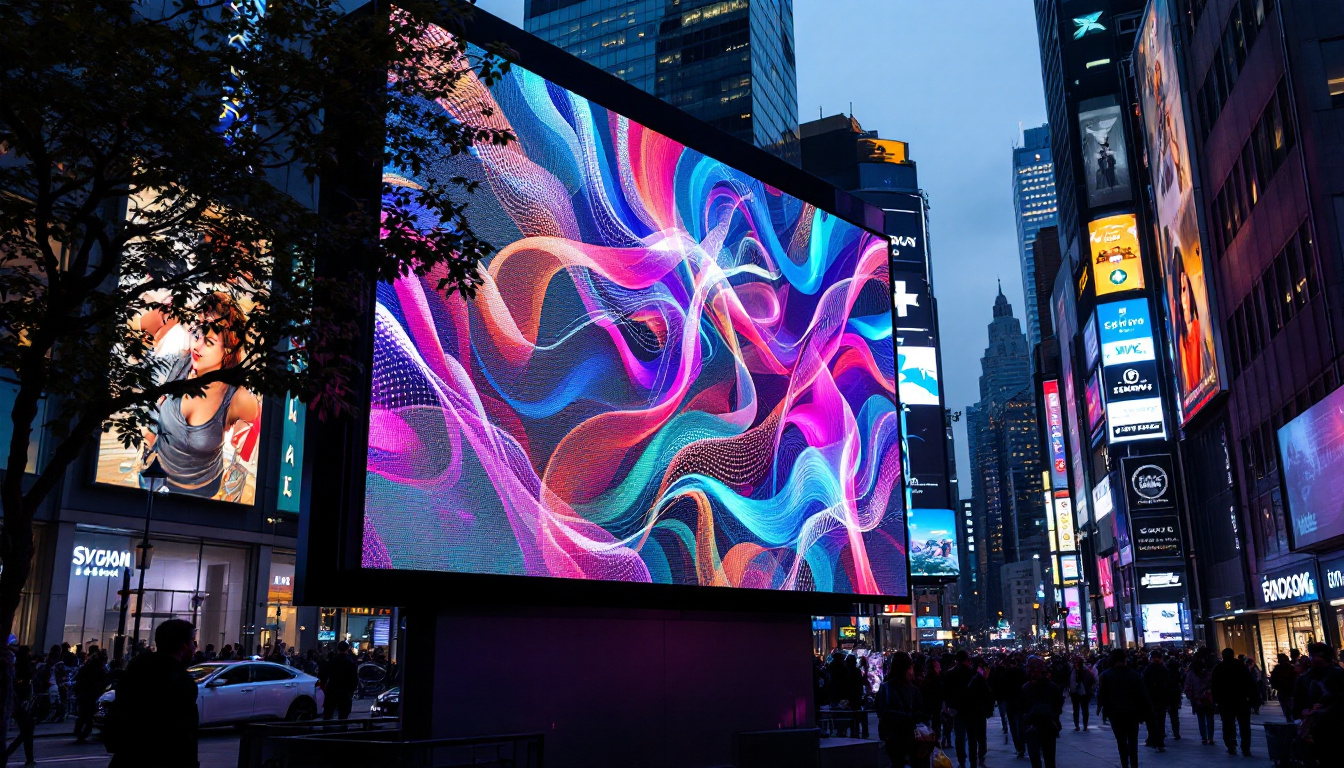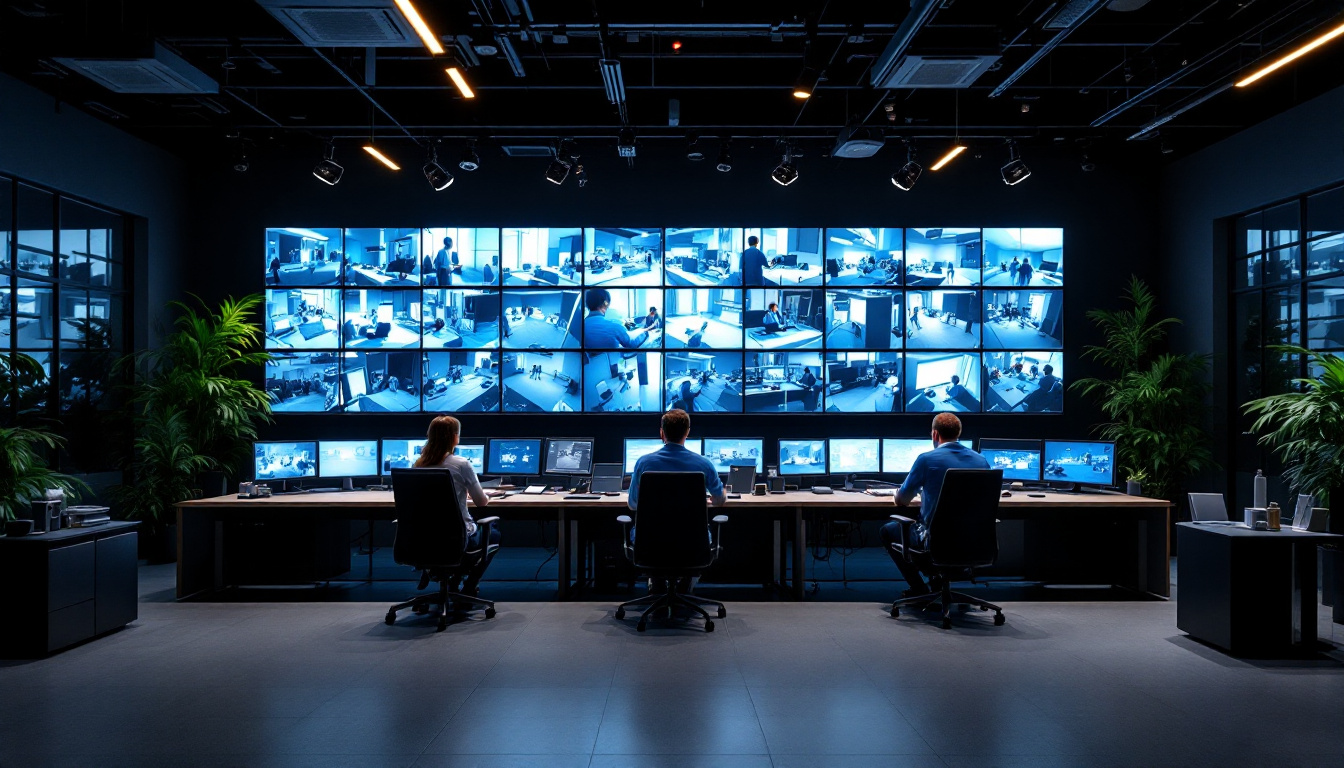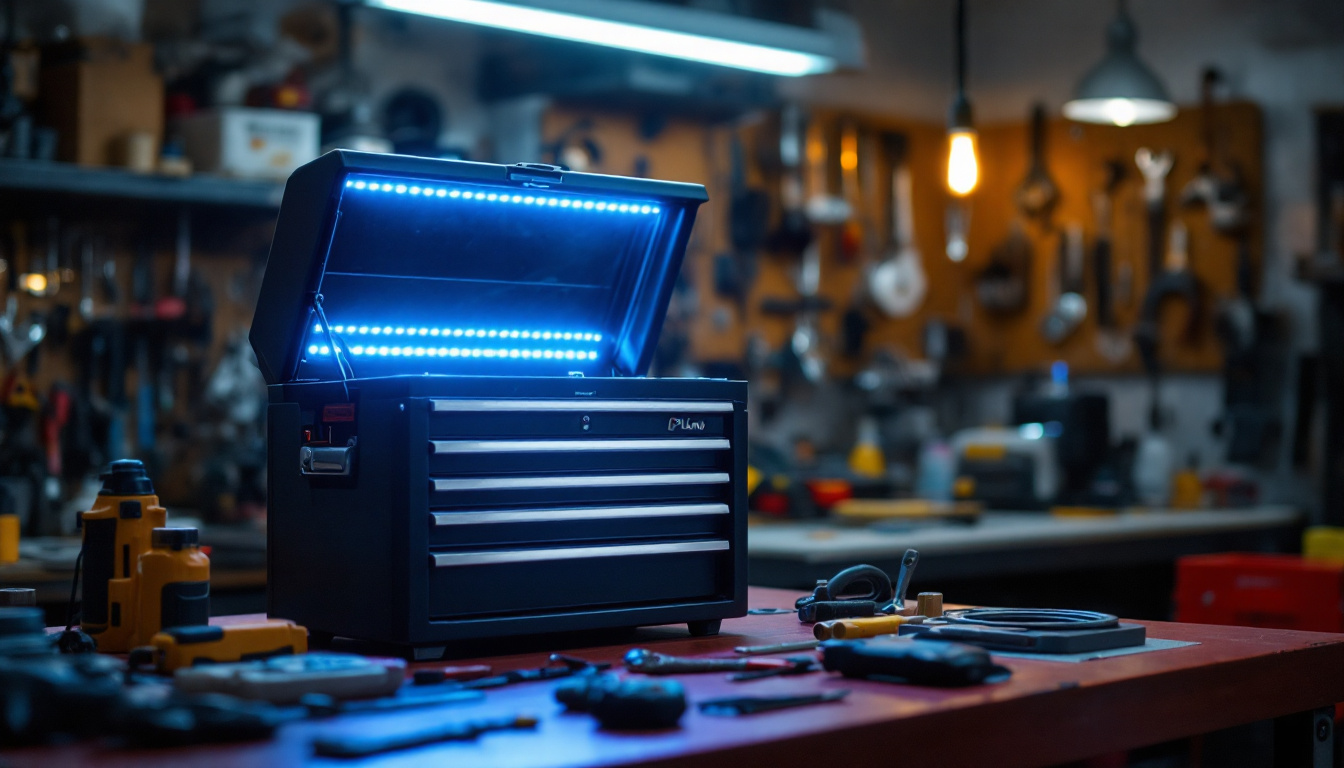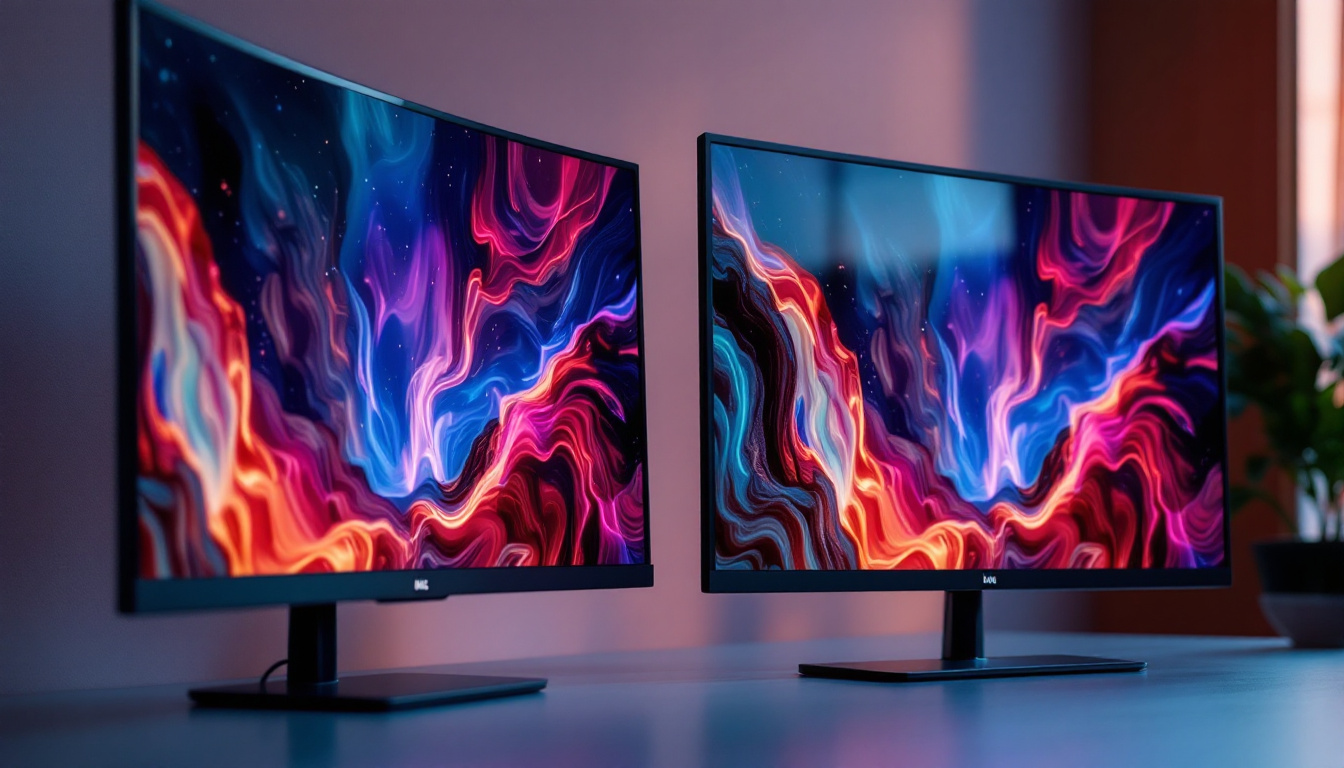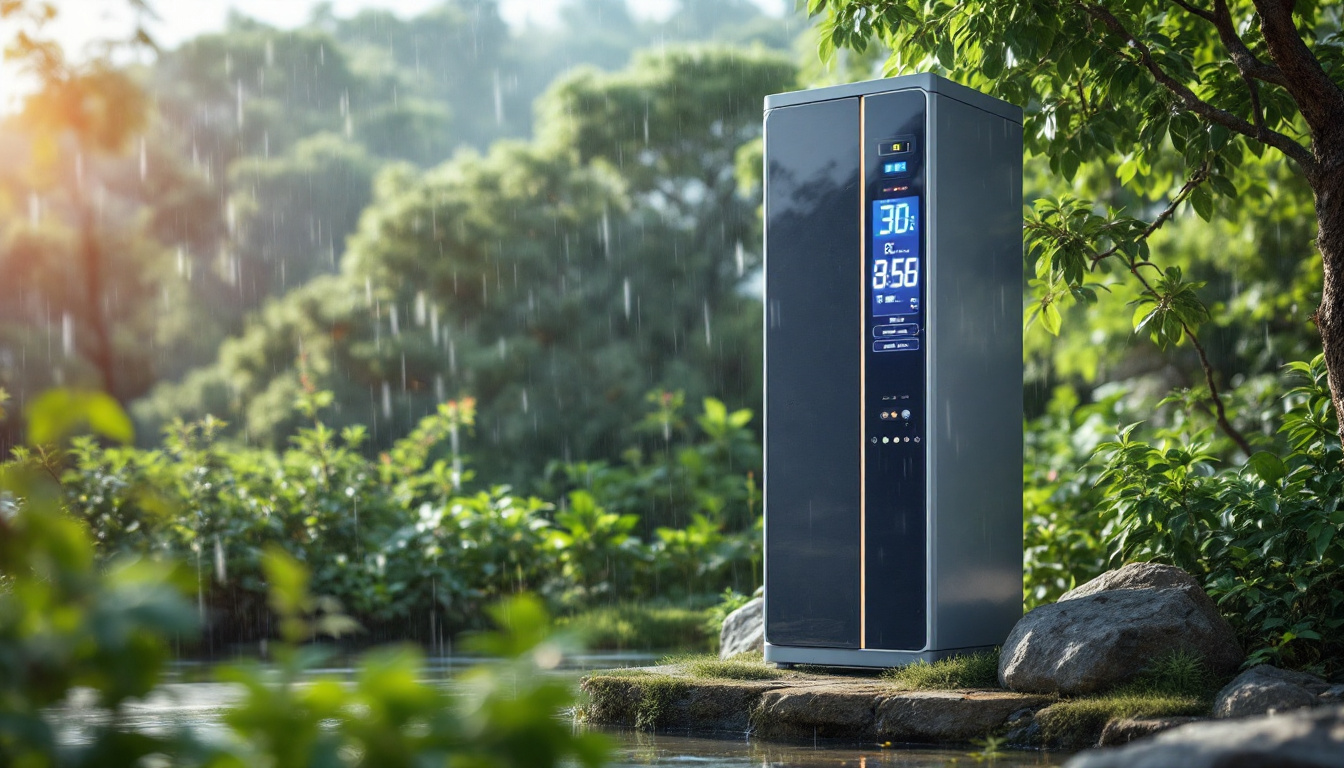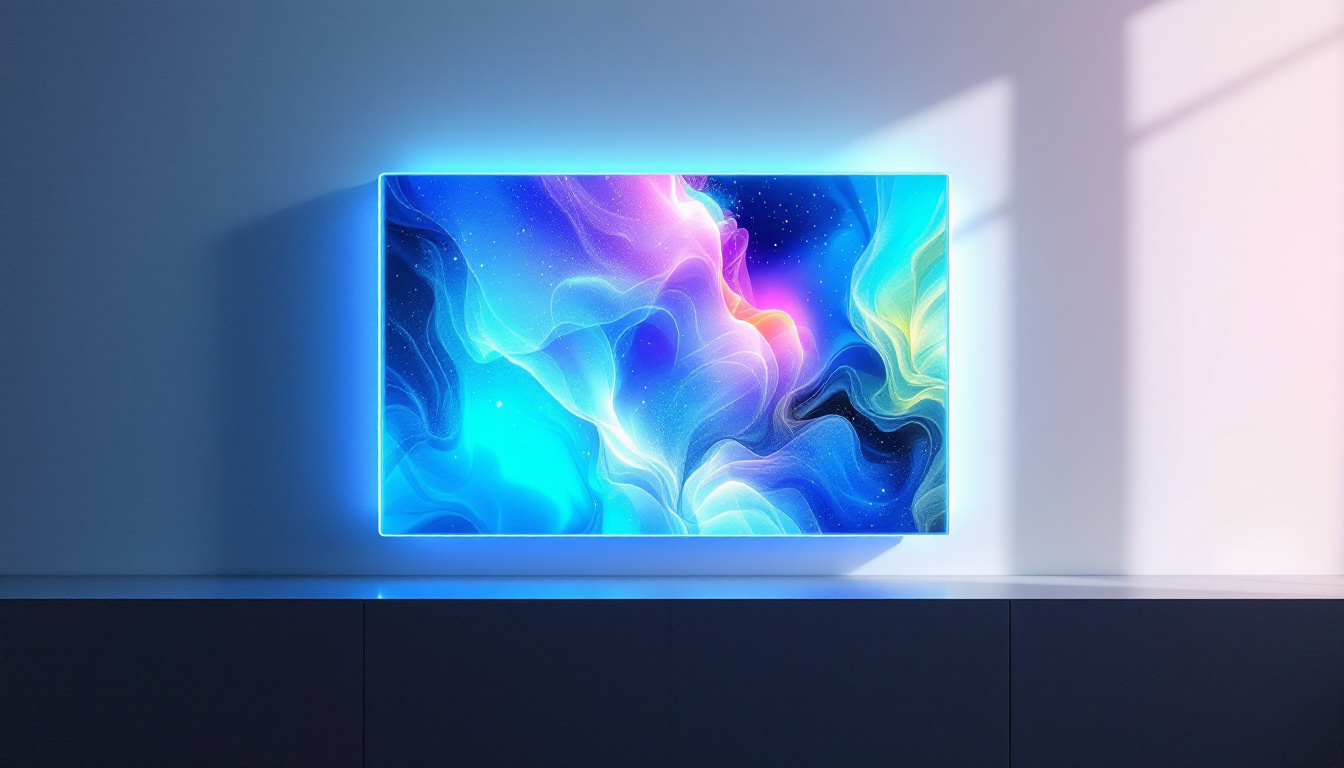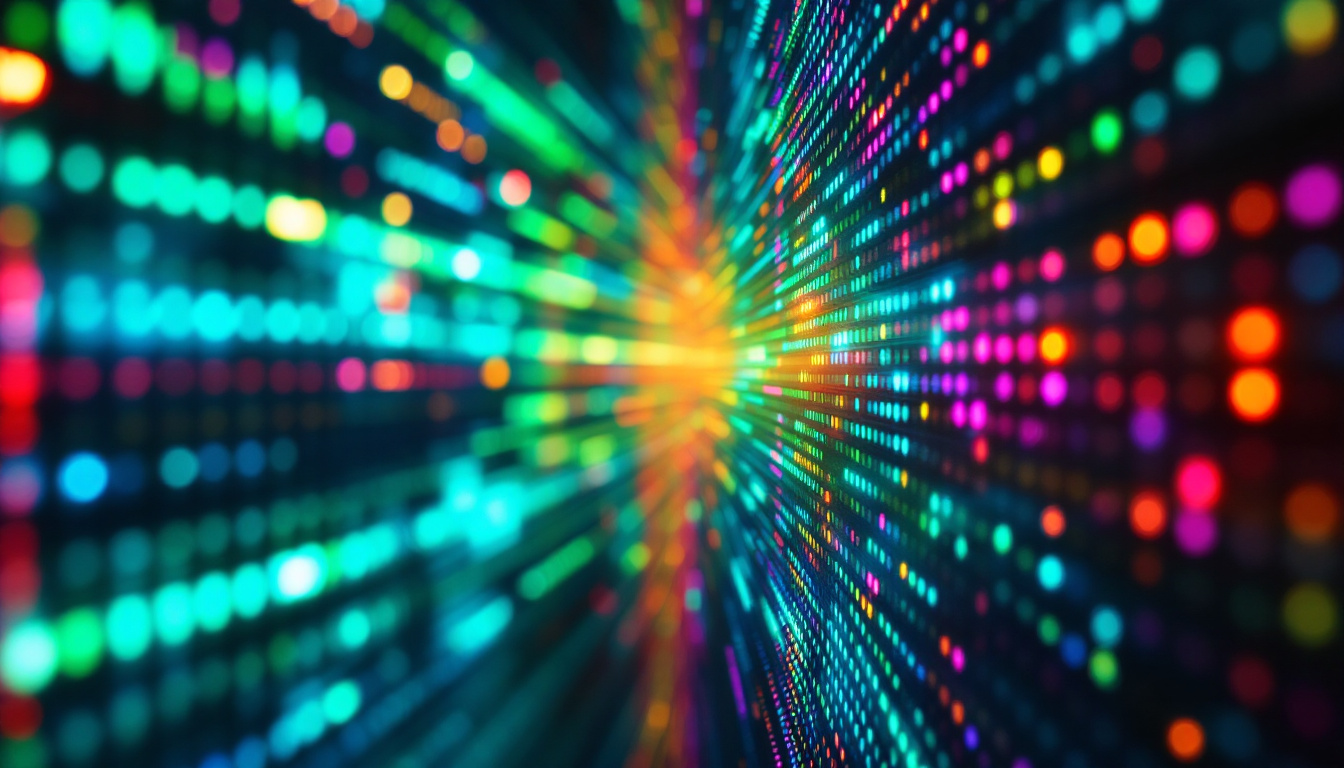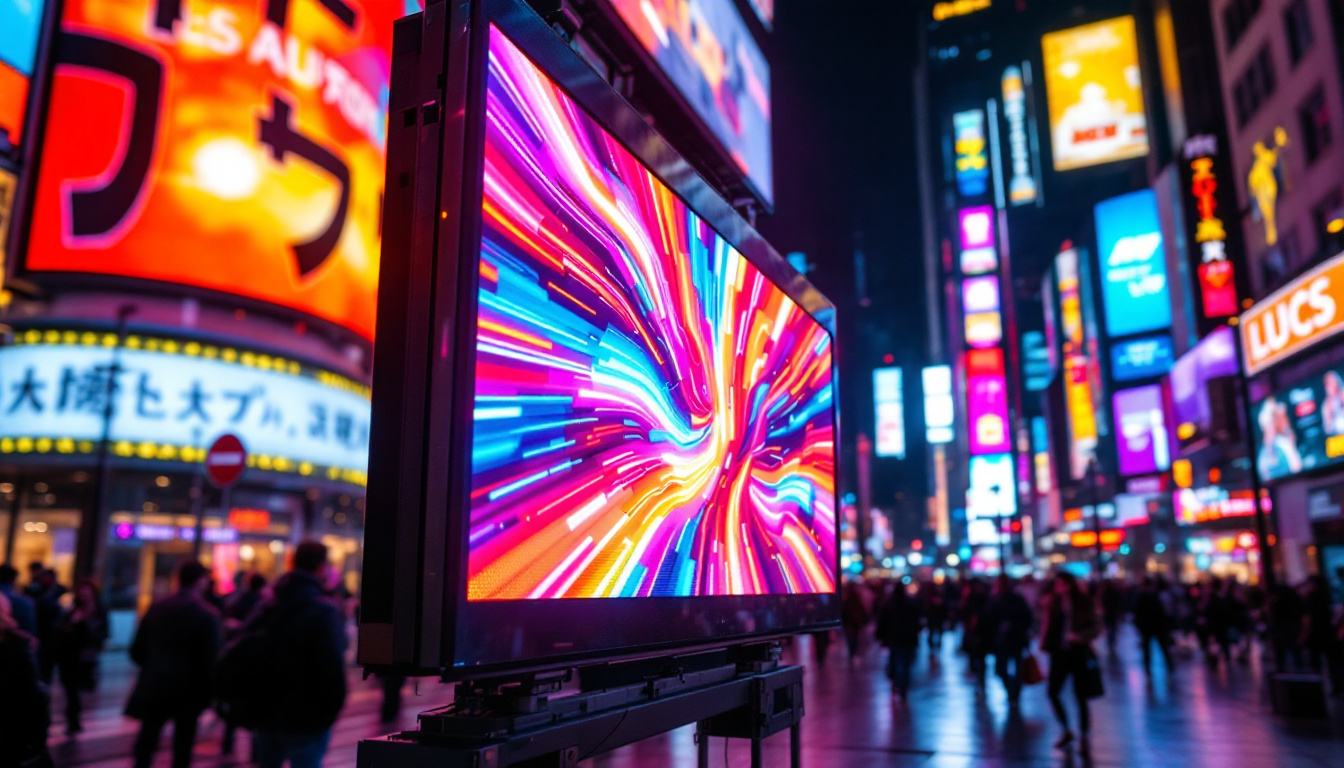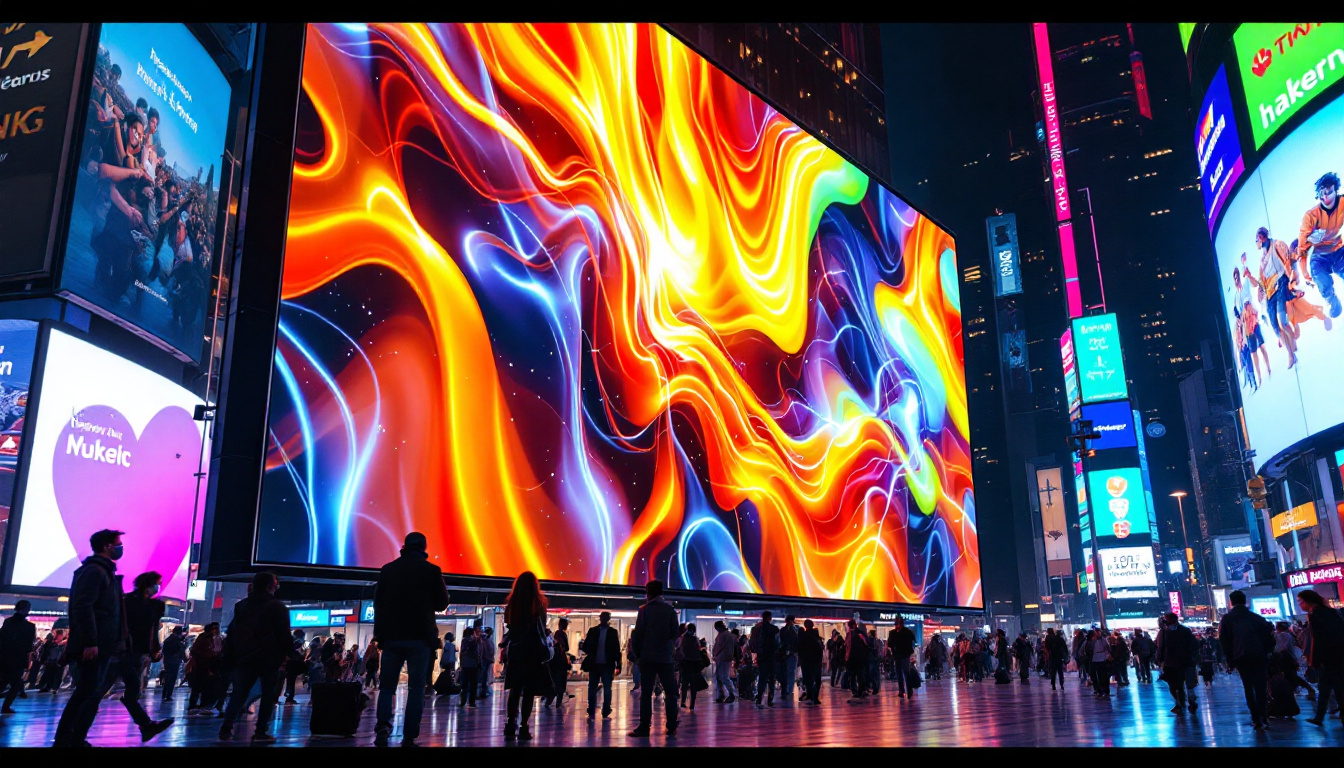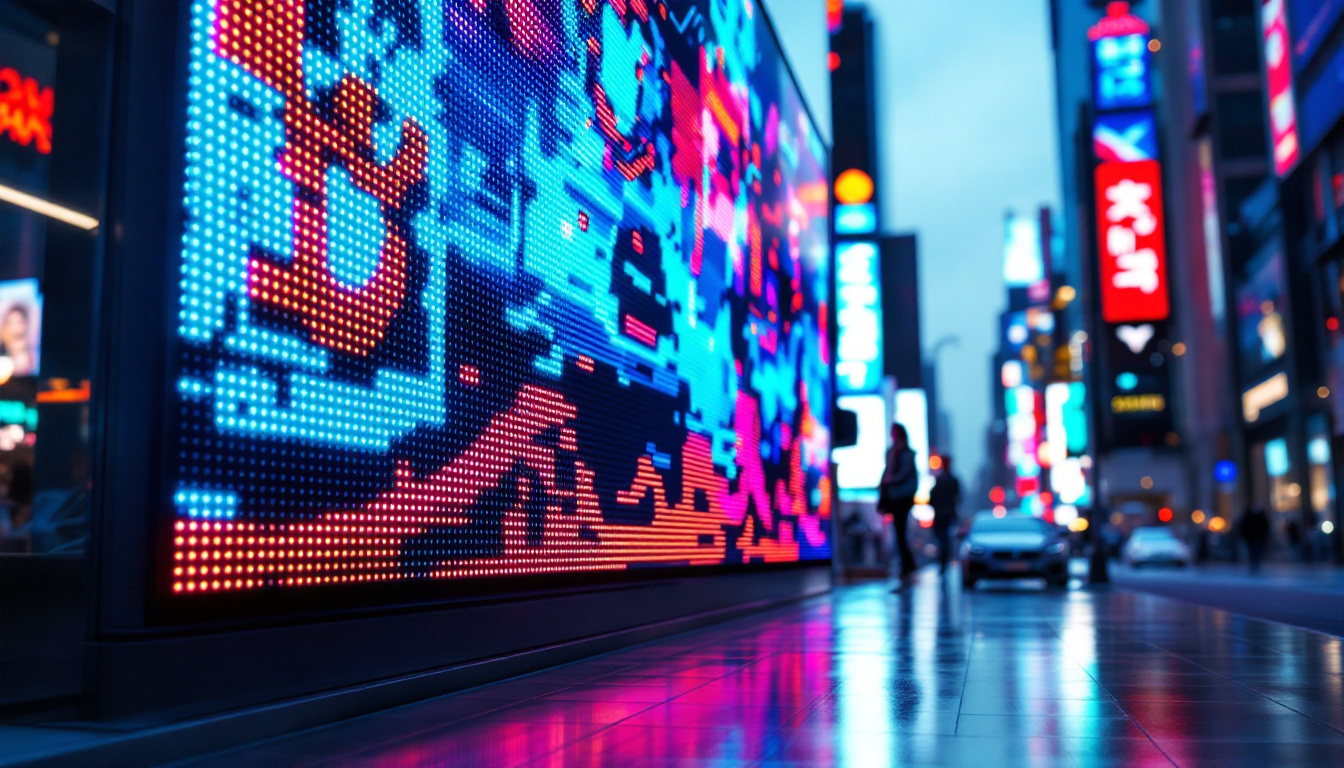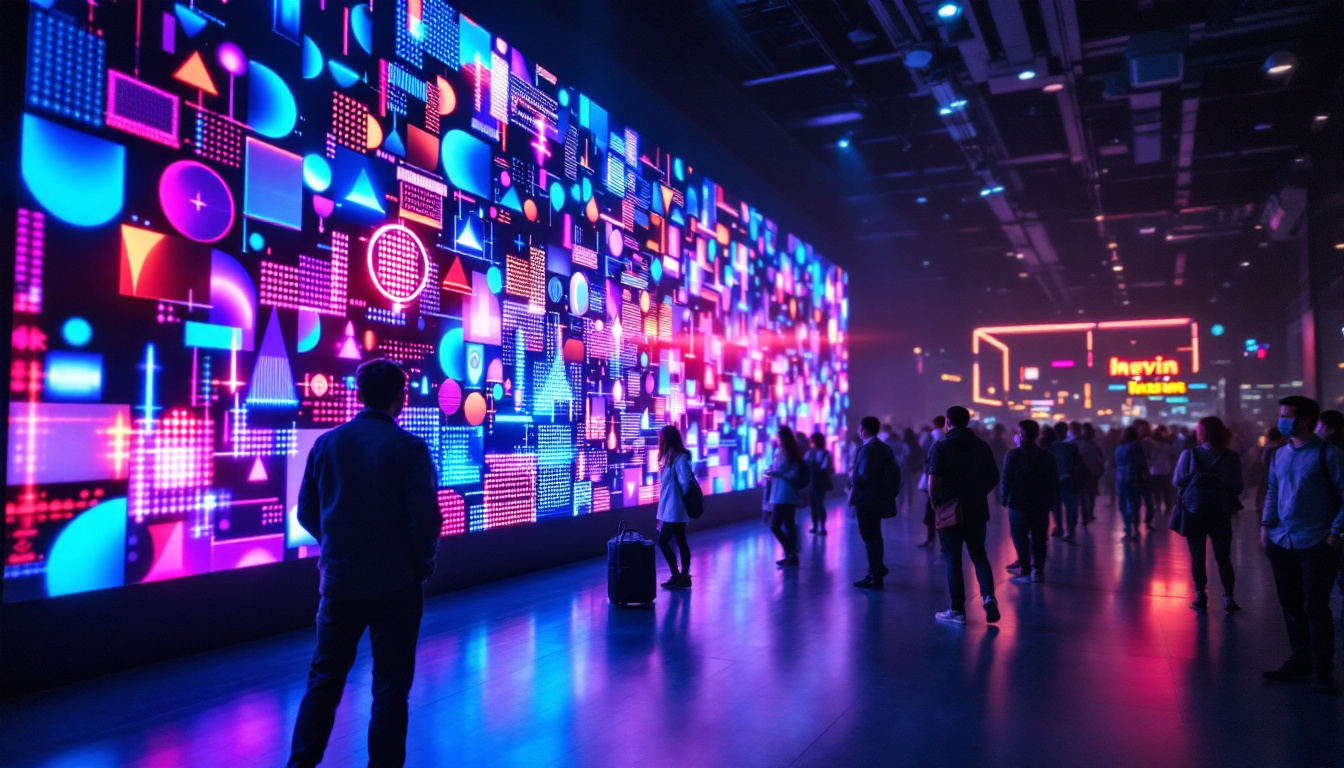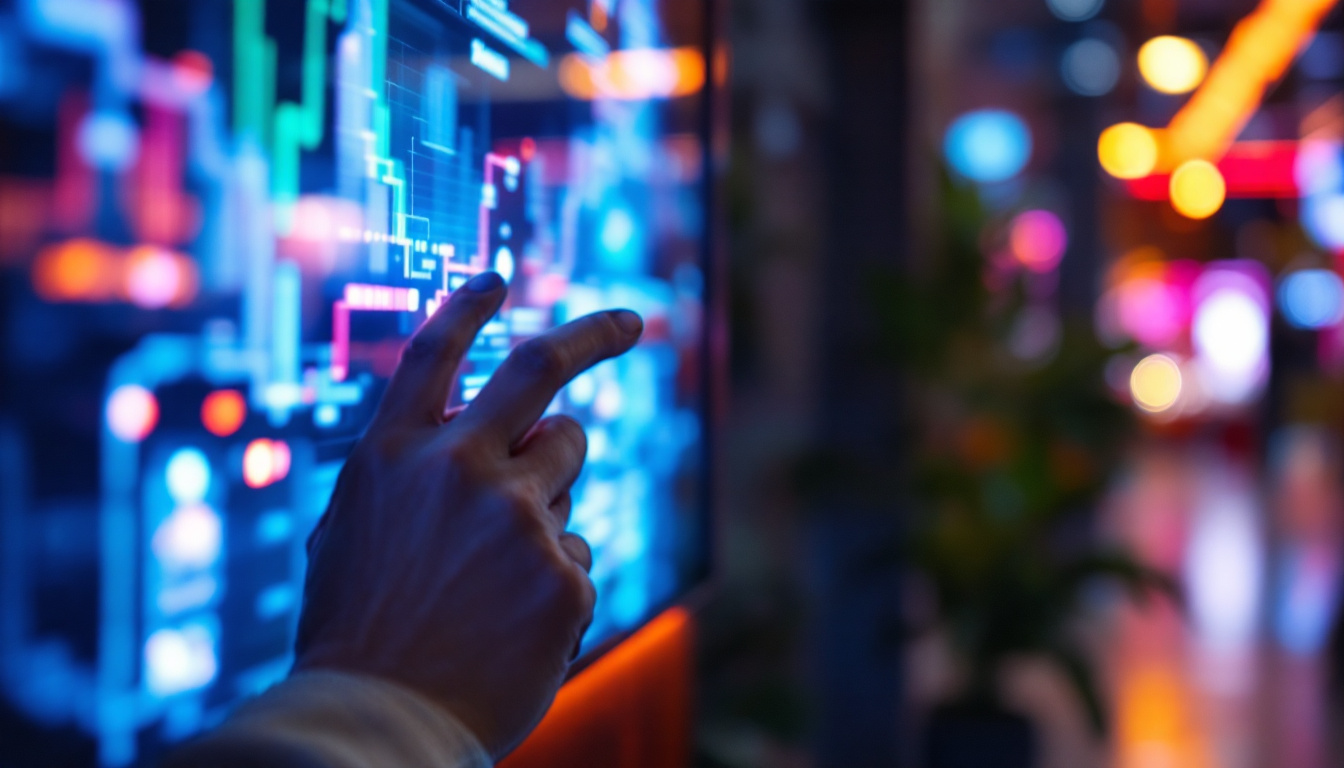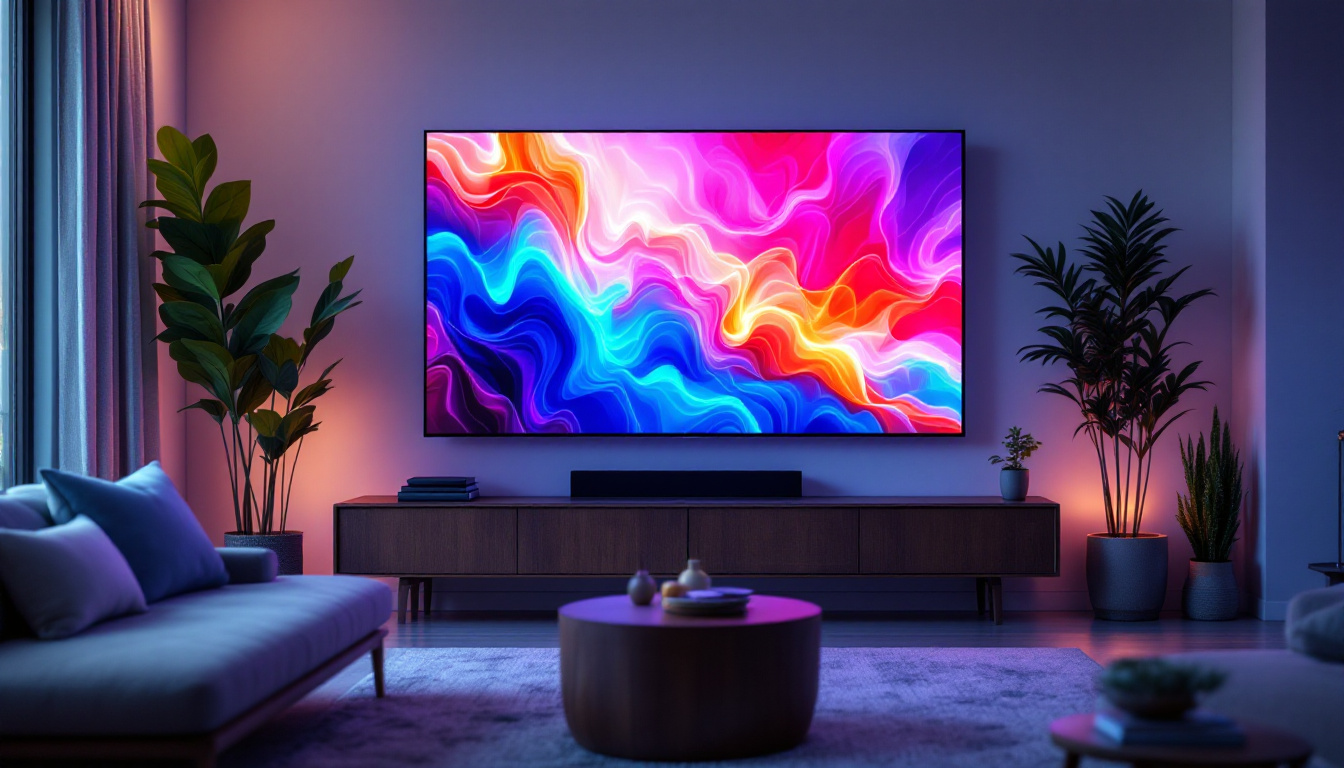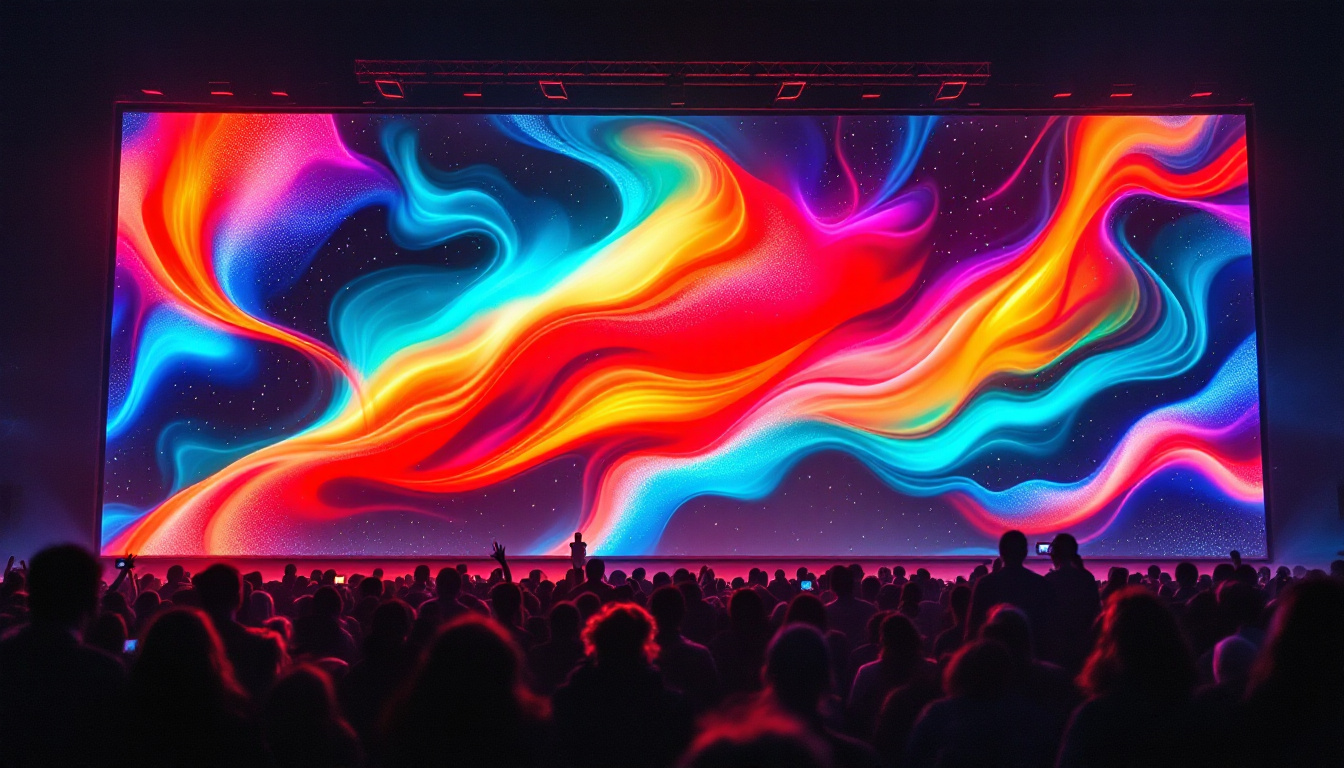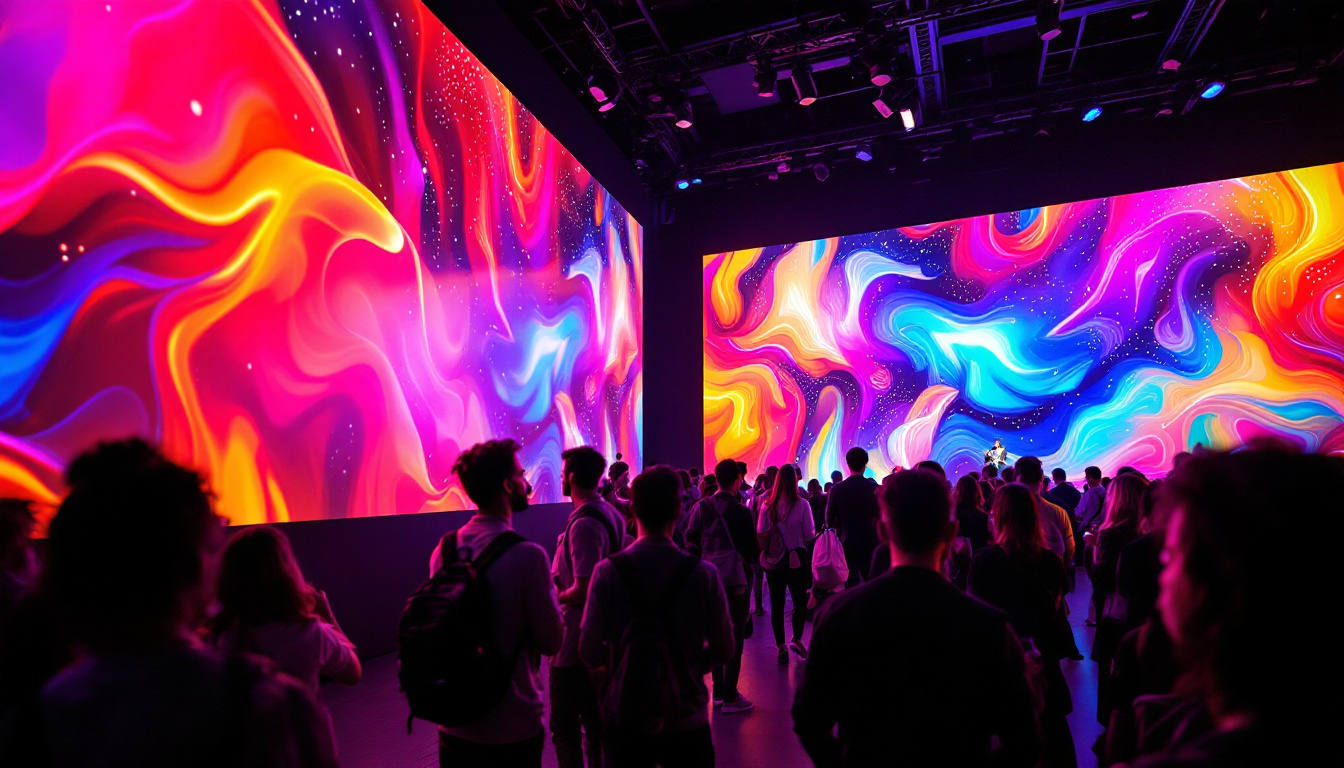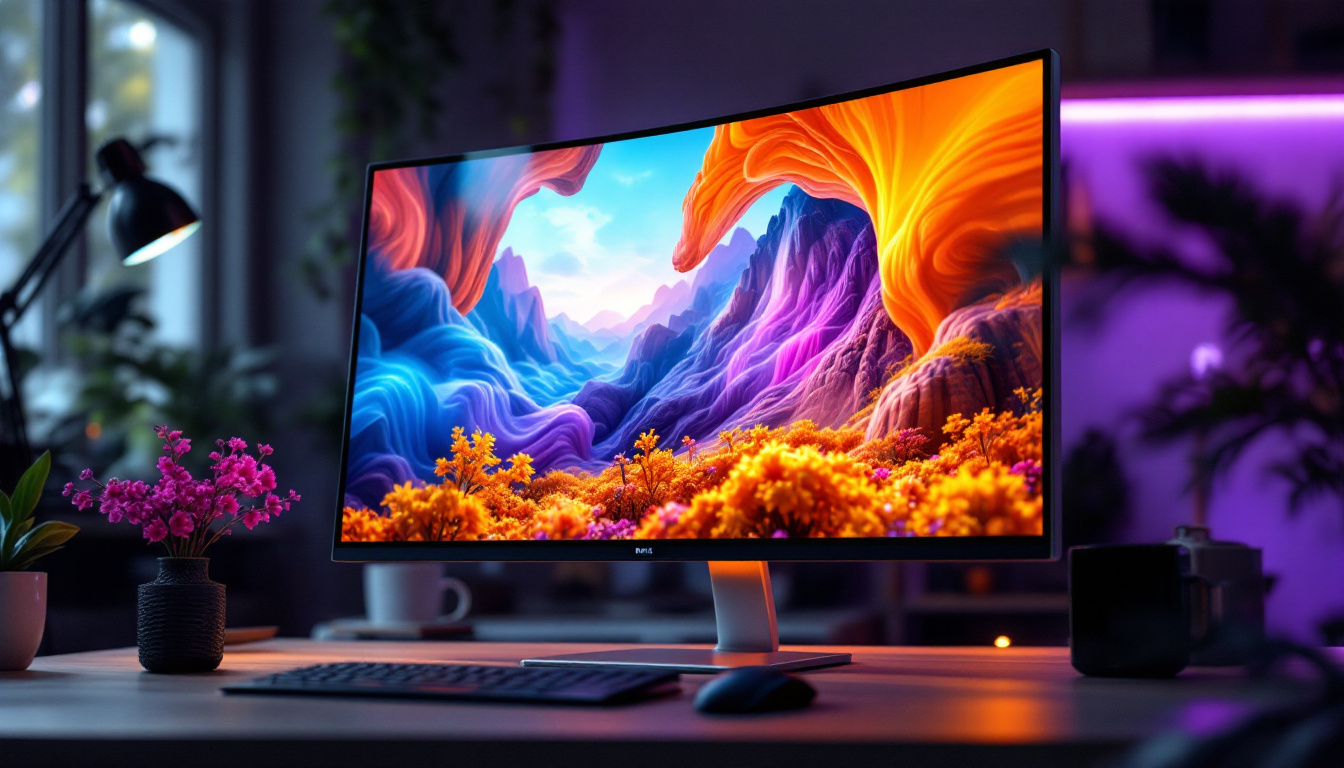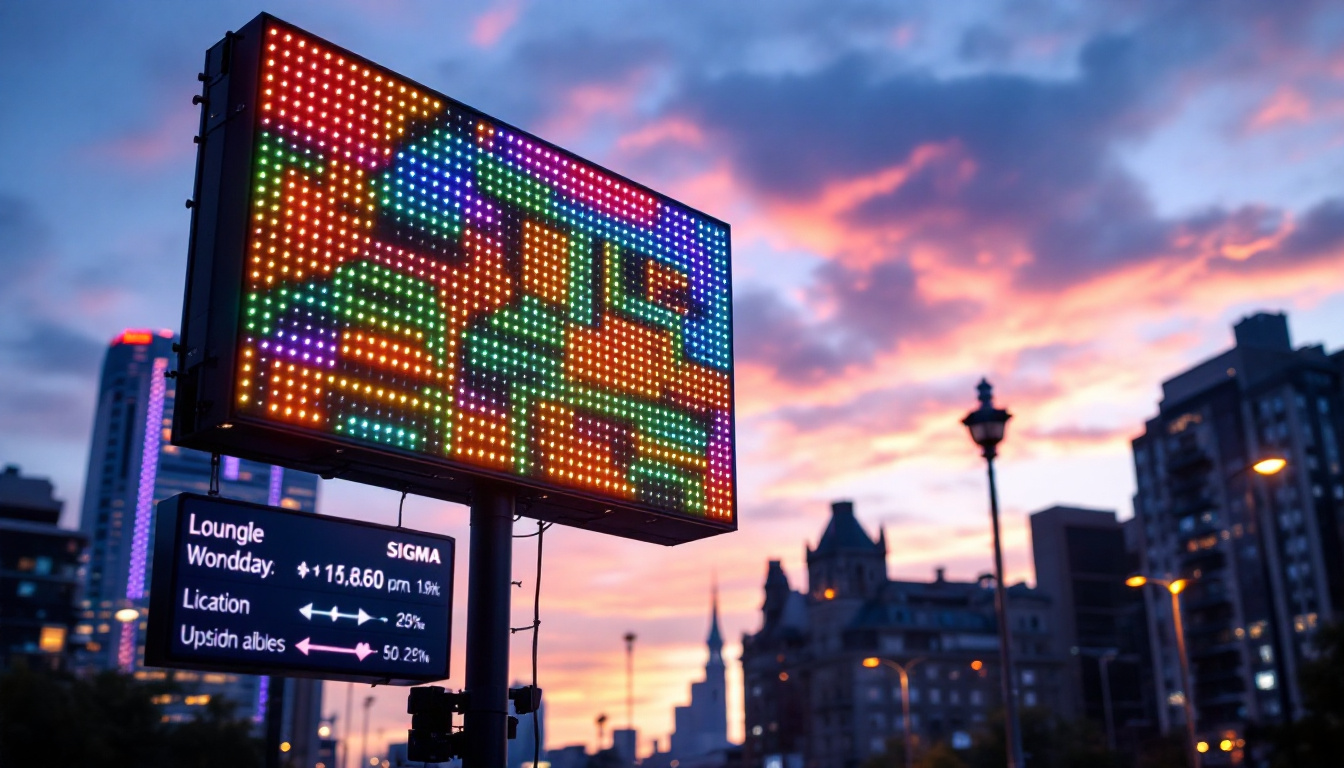In the world of modern advertising and information dissemination, LED displays have emerged as a powerful tool. Among these, the 200-foot LED lights stand out due to their impressive size and versatility. This article delves into the intricacies of LED displays, focusing on their construction, applications, and advantages.
Understanding LED Technology
Light Emitting Diodes (LEDs) are semiconductor devices that emit light when an electric current passes through them. This technology has revolutionized the way we think about lighting and displays, offering numerous advantages over traditional lighting methods. LEDs are not only energy-efficient but also have a longer lifespan, making them a cost-effective choice for both residential and commercial applications. As the world increasingly shifts towards sustainable practices, the role of LED technology in reducing carbon footprints cannot be overstated.
How LEDs Work
The basic principle behind LEDs involves electroluminescence, which is the phenomenon where a material emits light in response to an electric current. When electrons move through the semiconductor material, they release energy in the form of photons, which we perceive as light. This process is highly efficient, leading to lower energy consumption compared to incandescent or fluorescent lights. Furthermore, LEDs can be designed to emit light in various colors without the need for filters, thanks to the use of different semiconductor materials, making them versatile for a wide range of applications.
Types of LEDs
LEDs come in various types, each suited for specific applications. Common types include surface-mounted devices (SMD), chip-on-board (COB), and traditional through-hole LEDs. SMDs are particularly popular for large displays due to their compact size and high brightness, making them ideal for outdoor environments. Additionally, there are high-power LEDs that are used in applications requiring intense light output, such as in automotive headlights and street lighting. The flexibility in design and functionality of LEDs allows for innovative solutions in both decorative and functional lighting.
The Evolution of LED Displays
LED technology has evolved significantly over the years. Initially used for simple indicators and displays, it has now expanded into large-format screens used in stadiums, concerts, and advertising. The advancements in LED technology have allowed for higher resolutions, better color accuracy, and more dynamic content. Modern LED displays can achieve incredible brightness levels and contrast ratios, making them suitable for a variety of lighting conditions. Moreover, the integration of smart technology has enabled features such as remote control, programmable displays, and interactive capabilities, further enhancing user experience and engagement.
Applications of LED Technology
The applications of LED technology are vast and continually expanding. Beyond general lighting, LEDs are extensively used in automotive lighting, where their quick response times and energy efficiency are crucial for safety and performance. In the realm of horticulture, specialized LED grow lights are employed to optimize plant growth by providing the specific light wavelengths needed for photosynthesis. Additionally, in the field of medicine, LEDs are being utilized in various therapeutic applications, including phototherapy for skin conditions and surgical lighting, showcasing the versatility and innovative potential of LED technology across different sectors.
The Anatomy of a 200 Foot LED Display
A 200-foot LED display consists of numerous components that work together to create a vibrant visual experience. Understanding these components is crucial for appreciating the technology behind these impressive installations.
Pixel Configuration
The pixel configuration of an LED display refers to how the individual LEDs are arranged. Common configurations include 1R1G1B (red, green, blue) or 3-in-1 modules, where each pixel is made up of three LEDs. The arrangement affects the display’s resolution and overall image quality. For instance, a tighter pixel pitch, which is the distance between the centers of two adjacent pixels, can lead to sharper images and finer details, making it ideal for close viewing distances. Conversely, a larger pixel pitch may be more suitable for applications where viewers are farther away, such as outdoor billboards.
Brightness and Color Quality
Brightness is a critical factor for outdoor LED displays, especially those as large as 200 feet. Measured in nits, a higher brightness level ensures visibility even in direct sunlight. Additionally, color quality is paramount; a good LED display should produce a wide color gamut, allowing for vibrant and dynamic visuals. Advanced LED technology often incorporates features such as HDR (High Dynamic Range), which enhances the contrast between light and dark areas, resulting in a more lifelike image. This capability is particularly important for advertisements and media that rely on stunning visuals to capture attention and convey messages effectively.
Control Systems
The control system of an LED display manages the content being shown. This system can be as simple as a basic video player or as complex as a networked system that allows for real-time updates and interactive content. Advanced control systems enable synchronization with other displays, enhancing the overall viewing experience. Moreover, many modern control systems come equipped with software that allows for remote management, enabling operators to change content from anywhere in the world. This flexibility is particularly beneficial for businesses that need to update advertisements frequently or respond to current events in real-time, ensuring that their messaging remains relevant and engaging.
Power Supply and Cooling Systems
Another essential aspect of a 200-foot LED display is its power supply and cooling systems. Given the size and brightness of these displays, they require a significant amount of power to operate efficiently. A robust power supply ensures that each LED receives the necessary voltage and current, maintaining consistent brightness and performance. Additionally, effective cooling systems are crucial to prevent overheating, which can lead to reduced lifespan and performance issues. Many displays incorporate fans or heat sinks to dissipate heat, ensuring that the technology remains operational even during prolonged use in high-temperature environments.
Installation and Maintenance
The installation of a 200-foot LED display is a complex process that requires careful planning and execution. Factors such as location, structural support, and environmental conditions must be considered to ensure safety and functionality. Once installed, regular maintenance is essential to keep the display in optimal condition. This includes routine inspections, cleaning of the LED panels, and software updates to ensure that the control systems are functioning correctly. Some manufacturers offer remote monitoring services, allowing for proactive maintenance and quick identification of potential issues before they escalate, thereby minimizing downtime and maximizing the display’s operational lifespan.
Applications of 200 Foot LED Displays
200-foot LED displays are utilized in a variety of settings, each taking advantage of the display’s size and visibility. From advertising to entertainment, these displays serve multiple purposes.
Advertising and Marketing
One of the most prominent uses of large LED displays is in advertising. Brands leverage the size and brightness of 200-foot displays to capture the attention of passersby. High-resolution graphics and animations can convey messages quickly and effectively, making them an essential tool for marketers.
Sports and Entertainment
In the realm of sports, these displays enhance the spectator experience. They can show live game footage, instant replays, and advertisements, creating an engaging environment for fans. Concerts and events also benefit from large LED screens, providing visuals that complement the performance.
Public Information Displays
200-foot LED displays are increasingly used for public information, such as traffic updates, weather forecasts, and emergency alerts. Their visibility ensures that important information reaches a wide audience quickly, making them a vital component of urban infrastructure.
Advantages of Using 200 Foot LED Displays
The advantages of 200-foot LED displays extend beyond their size. They offer a range of benefits that make them an attractive option for various applications.
Energy Efficiency
One of the key benefits of LED technology is its energy efficiency. Compared to traditional lighting solutions, LED displays consume significantly less power, which translates into lower operational costs. This efficiency not only benefits businesses financially but also contributes to environmental sustainability.
Durability and Longevity
LED displays are designed to withstand harsh weather conditions, making them suitable for outdoor use. Their robust construction ensures a long lifespan, often exceeding 100,000 hours of operation. This durability reduces the need for frequent replacements, further enhancing their cost-effectiveness.
High-Quality Visuals
With advancements in technology, modern LED displays offer exceptional image quality. High resolution and brightness levels ensure that content is displayed clearly, even from a distance. This quality is crucial for maintaining viewer engagement, especially in advertising and entertainment contexts.
Installation and Maintenance Considerations
While 200-foot LED displays offer numerous benefits, proper installation and maintenance are essential to ensure optimal performance. Understanding these aspects can help organizations maximize their investment.
Installation Challenges
Installing a large LED display involves several challenges, including structural considerations and electrical requirements. The display must be securely mounted to withstand wind and other environmental factors. Additionally, proper electrical setup is crucial to ensure consistent power supply and functionality.
Regular Maintenance
To keep a 200-foot LED display in top condition, regular maintenance is necessary. This includes cleaning the screen, checking for faulty pixels, and ensuring the control systems are functioning correctly. Scheduled maintenance can prevent costly repairs and extend the lifespan of the display.
Software Updates
As technology evolves, software updates may be necessary to enhance functionality and security. Keeping the control system updated ensures that the display can support new features and content formats, maintaining its relevance in a rapidly changing digital landscape.
Future Trends in LED Display Technology
The future of LED display technology is bright, with ongoing innovations promising to enhance performance and expand applications. Understanding these trends can provide insights into what to expect in the coming years.
Advancements in Resolution
As demand for higher quality visuals increases, advancements in resolution are expected to continue. Future LED displays may offer even finer pixel pitches, resulting in sharper images and more detailed content. This trend will be particularly beneficial for applications requiring close viewing, such as concerts and exhibitions.
Integration with Smart Technologies
As smart technologies become more prevalent, the integration of LED displays with IoT (Internet of Things) systems is anticipated. This integration will allow for more dynamic content management, enabling displays to adapt in real-time based on audience engagement and environmental factors.
Eco-Friendly Innovations
With a growing emphasis on sustainability, future LED displays are likely to incorporate eco-friendly materials and technologies. Innovations such as solar-powered displays and recyclable components will contribute to reducing the environmental impact of large-scale advertising and information systems.
Conclusion
200-foot LED displays represent a significant advancement in visual communication technology. Their ability to deliver high-quality visuals, coupled with energy efficiency and durability, makes them an ideal choice for various applications ranging from advertising to public information. As technology continues to evolve, these displays will likely become even more integrated into our daily lives, shaping the way we interact with information and entertainment.
Understanding the intricacies of LED displays can empower organizations to make informed decisions about their use. Whether for marketing, sports, or public information, the potential of 200-foot LED displays is vast, promising a bright future for this dynamic technology.
Discover LumenMatrix’s Innovative LED Display Solutions
Ready to elevate your visual communication with the power of LED technology? LumenMatrix is at the forefront of LED display innovation, offering a diverse range of solutions tailored to your needs. From captivating Indoor and Outdoor LED Wall Displays to dynamic Vehicle and Sports LED Displays, our products are designed to make your brand shine. Experience the difference with our Floor LED Displays, Custom configurations, All-in-One solutions, and Transparent Displays. Embrace the future of advertising and engagement with LumenMatrix’s state-of-the-art LED displays. Check out LumenMatrix LED Display Solutions today and transform your space into a mesmerizing visual experience.


